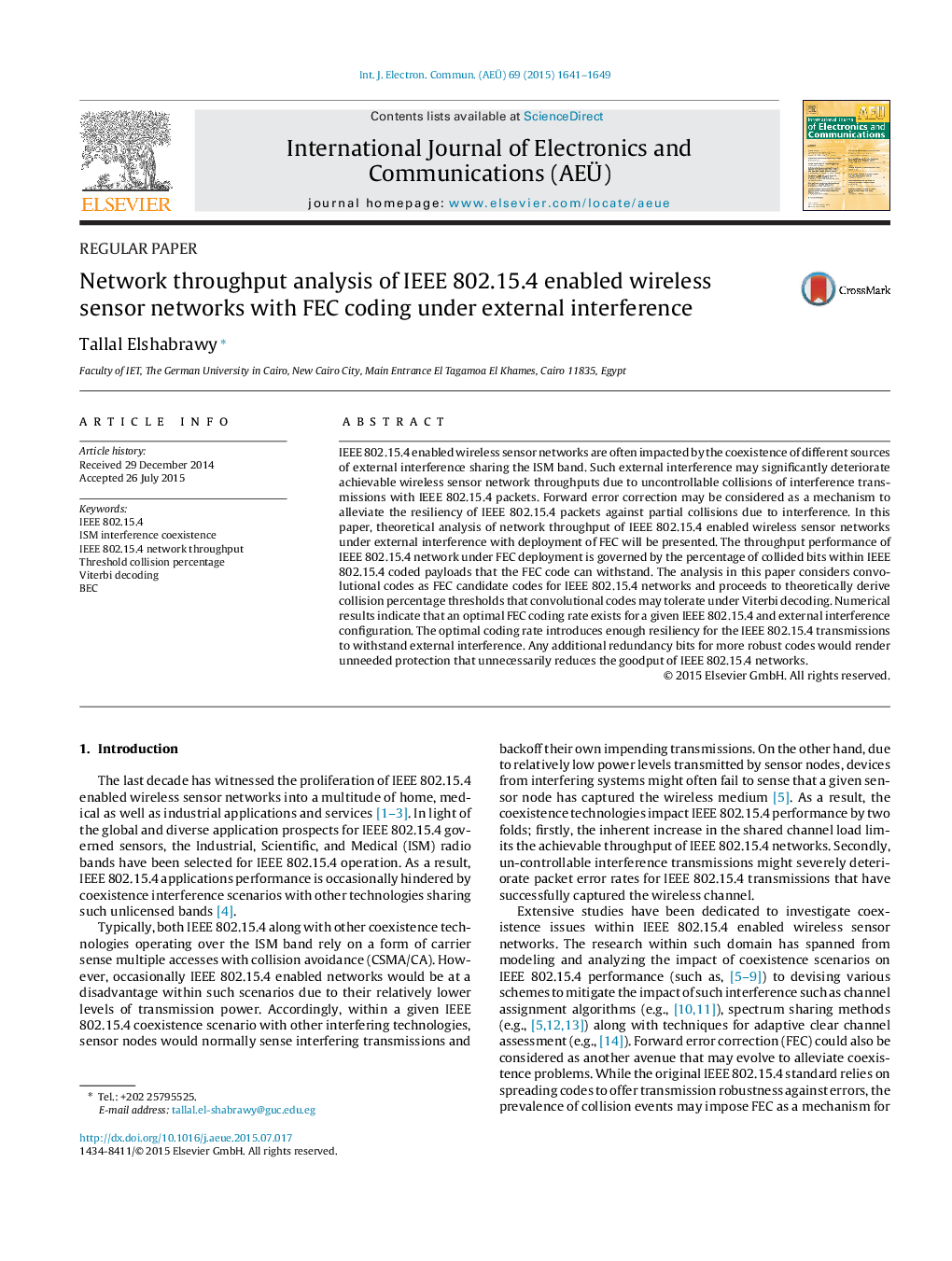| Article ID | Journal | Published Year | Pages | File Type |
|---|---|---|---|---|
| 447490 | AEU - International Journal of Electronics and Communications | 2015 | 9 Pages |
Abstract
IEEE 802.15.4 enabled wireless sensor networks are often impacted by the coexistence of different sources of external interference sharing the ISM band. Such external interference may significantly deteriorate achievable wireless sensor network throughputs due to uncontrollable collisions of interference transmissions with IEEE 802.15.4 packets. Forward error correction may be considered as a mechanism to alleviate the resiliency of IEEE 802.15.4 packets against partial collisions due to interference. In this paper, theoretical analysis of network throughput of IEEE 802.15.4 enabled wireless sensor networks under external interference with deployment of FEC will be presented. The throughput performance of IEEE 802.15.4 network under FEC deployment is governed by the percentage of collided bits within IEEE 802.15.4 coded payloads that the FEC code can withstand. The analysis in this paper considers convolutional codes as FEC candidate codes for IEEE 802.15.4 networks and proceeds to theoretically derive collision percentage thresholds that convolutional codes may tolerate under Viterbi decoding. Numerical results indicate that an optimal FEC coding rate exists for a given IEEE 802.15.4 and external interference configuration. The optimal coding rate introduces enough resiliency for the IEEE 802.15.4 transmissions to withstand external interference. Any additional redundancy bits for more robust codes would render unneeded protection that unnecessarily reduces the goodput of IEEE 802.15.4 networks.
Keywords
Related Topics
Physical Sciences and Engineering
Computer Science
Computer Networks and Communications
Authors
Tallal Elshabrawy,
